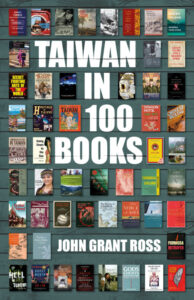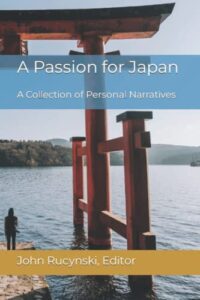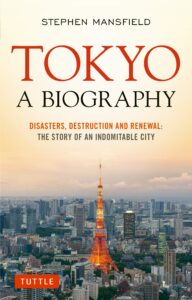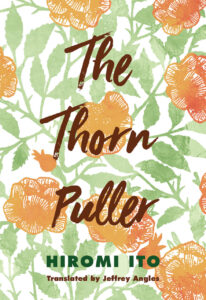Review by John Rucynski
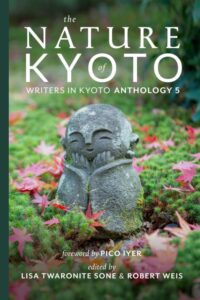 The Nature of Kyoto is the fifth anthology from Writers in Kyoto (WiK), a “group of published and self-published English-language authors working or living in the city.” Anthologies always run the risk of focusing on too narrow a theme, attracting a certain number of readers, but giving pause to many others who wonder whether the volume will sustain their interest. Fortunately, the editors of this anthology approached the project with a broad definition of nature, noting they “wanted contributors to investigate the myriad aspects of Kyoto’s ‘nature’–referring to both the natural world and the ‘inner nature’ or soul of the city.” So, there is plenty to offer a nature-lover like this reviewer, and also readers with an interest in any aspect of Kyoto, or Japan.
The Nature of Kyoto is the fifth anthology from Writers in Kyoto (WiK), a “group of published and self-published English-language authors working or living in the city.” Anthologies always run the risk of focusing on too narrow a theme, attracting a certain number of readers, but giving pause to many others who wonder whether the volume will sustain their interest. Fortunately, the editors of this anthology approached the project with a broad definition of nature, noting they “wanted contributors to investigate the myriad aspects of Kyoto’s ‘nature’–referring to both the natural world and the ‘inner nature’ or soul of the city.” So, there is plenty to offer a nature-lover like this reviewer, and also readers with an interest in any aspect of Kyoto, or Japan.
In the foreword, Pico Iyer writes that, “The minute you step into Japan’s thousand-year capital, it’s hard not to start putting things into words.” Proving this point, The Nature of Kyoto features contributions from 30 writers who have been inspired by Kyoto in one way or another. This anthology also features a wide range of writing genres and styles, from poems and short vignettes of a few hundred words to extended pieces of up to seven or eight pages. This format allows space for 30 engaging contributions that offer an impressive variety of perspectives of the ancient capital.
Iyer also writes of the clash between the traditional and the modern in Kyoto, summarizing this dichotomy by explaining that the city is “madly in love with the latest and fashionable,” yet “everywhere…are spirits alive in the hills.” In “The Graveyard of Homyo-in,” Everett Kennedy Brown writes of these spirits as he senses being watched by something “neither a human, nor an animal” while walking up the path to visit the grave of Ernest Fenollosa (1853-1908), the American art historian dedicated to preserving traditional Japanese art.
The passage of time is also explored in Rebecca Otowa’s short fictional piece “The Pocket Garden.” This poignant tale paints an endearing portrait of the 95-year-old Ei-chan and his love for the nakaniwa (“inner garden,” or as the author dubs it, “pocket garden”) in the small wooden Kyoto house where he has spent all of his years. Sadly, the tranquility of the traditional neighborhood is in peril due to development plans for a high-rise hotel.
Kyoto’s past versus present is also a dominant theme of “For Love of the Octopus God” by Elaine Lies. Fellow long-term residents of Japan will surely relate to this piece, as the author reflects on an old school izakaya (casual eating and drinking establishment) she fell in love with during her student years in Kyoto. Upon visiting the izakaya four decades later, the author laments that, “There will come an end someday that is unfathomable.” It is no surprise that the Buddhist concept of impermanence flows through this volume and Lies vows that she will continue to visit the izakaya while she can, stressing that, “I will laugh. I will live.”
The anthology is not simply a love letter to the nature of Kyoto, but also a reminder of the risks that abound in the great outdoors. Hiking enthusiast Edward J. Taylor addresses this theme in “Peeks of Danger,” summarizing his harrowing journey up and down Minagoyama, at 971 meters the tallest peak in Kyoto Prefecture. Despite its stature as one of the Kansai and Kinki hyakumeizan (“100 Eminent Peaks”), the trail has become difficult to access due to frequent storms of recent years. But you don’t even have to wander into the wilderness to encounter the threats of the natural world in modern Kyoto. In the frightening but equally entertaining “Nature is Trying to Kill You,” Fernando Torres highlights recent clashes between humans and wildlife in his neighborhood in Kyoto, beginning with accounts of wild boars who entered an eldercare facility, university grounds, and even the lobby of a hotel.
In a volume dedicated to the nature of Kyoto, it is no surprise that several chapters also focus on how the abundance of nature has contributed to the city’s vibrant food culture. In “Food for Thought and for the Thoughtful,” Julian Holmes details how more than 40 types of vegetables are certified as kyo-yasai, Kyoto vegetables. Combined with the importance of the seasons within Japanese cuisine as a whole, Holmes expresses that in Kyoto, “It is no exaggeration to say that you can literally tell the time of the year by the vegetables served in front of you.” Karen Lee Tawarayama also emphasizes the vital link between food and the seasons in her contribution, “Nature, Neighbors, and Nibbles.” A nostalgic look at life in her now permanent home of Kyoto, the author recounts how the highlight of a previous private lesson she taught was that it was always accompanied by the serving of sweets, as her student “was simply a connoisseur of traditional confectioneries.” Looking back, she aptly sums up, “The Japanese mindset connects deeply with seasonal flow, and it is delightful to confirm this connection through snacks and confectioneries shared with friends and loved ones.”
Returning to Pico Iyer’s assertion that there are “spirits alive in the hills,” a volume on Kyoto would not be complete without a focus on the city’s ascetic and spiritual traditions. “Kyoto: City of Fire and Water” by Jann Williams is a fascinating look at the role of these opposing elements in a range of traditional events and purification rituals. Williams details how in addition to important “firsts” of the New Year in Japanese culture, such as hatsumōde (first temple or shrine visit), there are also words dedicated to firsts involving fire and water, including hatsukamado (first kindling of the stove) and wakamizu (first water drawn from a well). In his contribution “Thinking Kyoto like a Mountain,” co-editor Robert Weis explores the mountains of Kyoto, but–to return to the opening “A Word from the Editors”–from the perspective of “both the natural world and the ‘inner nature’ or soul of the city.” The title of this piece is borrowed from the phrase “thinking like a mountain,” coined by American author and ecologist Aldo Leopold. Weis sums this philosophy up as “having a holistic appreciation of the interconnectedness of ecosystems, rather than thinking as an isolated individual.”
To expand on this idea of interconnectedness, an appealing feature of anthologies is discovering common themes that crop up despite a great range of backgrounds, nationalities, and writing styles among contributors. What really resonated when I finished this volume was the concept of Kyoto as home. In “Kyotoyama,” Preston Keido Houser theorizes that all visitors to Kyoto are “‘born’ here, since the city appears to qualify as a spiritual point of departure.” Indeed, in the aforementioned contribution by Elaine Lies, she recounts upon sitting down and being served a beer at her beloved izakaya after a long absence: “I drink deeply. I sigh. I am home.” Similarly, Everett Kennedy Brown reveals in his visits to the garden at Homyo-in that, “There was an inner clarity here that I had rarely experienced in my previous life.” Considering the current (but not new) threat of overtourism to Japan’s ancient capital, it is a reminder that beyond the horribly crowded major sites and consequently jam-packed public transportation, there is still a magical city of hidden gems and tranquility that Japanese and expats alike can call home.
One additional bonus of this volume that must be mentioned is the photography. It is artistically and sparsely arranged, each contribution generally accompanied by a single high-quality photograph that provides a sneak peek into the ensuing work.
Whether you live in Kyoto, are a casual visitor, or just dream of seeing the city someday, The Nature of Kyoto has much to hold your interest, with its 30 varied and fascinating portraits of Japan’s ancient capital. In addition to the range of writing styles featured in these pages, the editors also explain that the volume also caters to different reading styles, from those who like to “dip in and dip out” to those who prefer to “read from cover to cover in one sitting.” However you approach it, the latest offering from WiK is an enjoyable journey guaranteed to increase your knowledge of both Kyoto and Japanese culture in general.



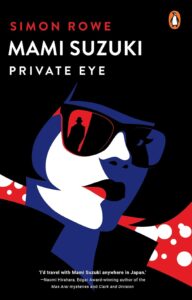
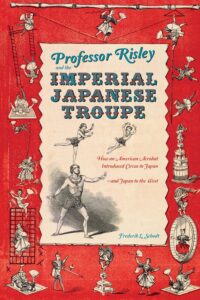

 The Nature of Kyoto is the fifth anthology from
The Nature of Kyoto is the fifth anthology from 
